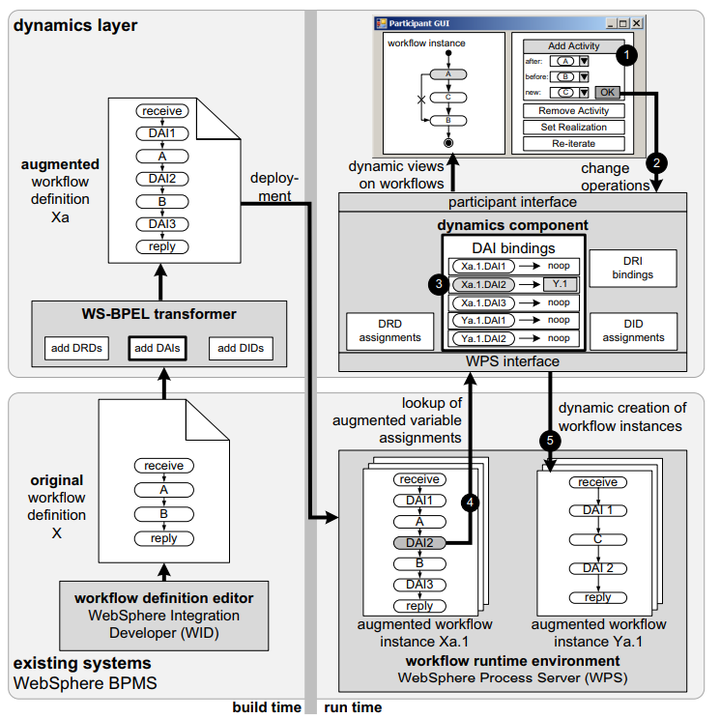
Abstract
Many companies use business process management systems (BPMS) for modeling and execution support of their business processes. Many processes are highly dynamic and require changes even during execution. Common commercial BPMS fail to support such processes appropriately since they work in a rather static manner, i.e. they demand that the structure of a process is fixed before execution. Our research group cooperates with an industry partner who uses a static BPMS. This paper describes an approach that posteriorly extends this static BPMS inasmuch as dynamic changes of processes during execution are supported. The benefit of this approach is that our partner in industry gains support of dynamic processes but still use the existing BPMS and save investments related to it.